AMD Radeon R9 390X, R9 380 And R7 370 Tested
AMD's 300-series Radeons dropped today, and we've got three MSI cards in the lab: the R9 390X Gaming 8G, the R9 380 Gaming 2G and the R7 370 Gaming 2G.
Workstation And Professional Applications
It’s not exactly news that consumer graphics cards can replace workstation products partially under the best of circumstances, and not at all under the worst.
Then again, as more application vendors adopt DirectX over OpenGL in their products, Radeon and GeForce cards become more viable as alternatives in the semi-professional sector, since those heavily-optimized drivers aren’t as influential. So long as you’re aware of a desktop card’s limitations, you’ll be fine.
The following selection of benchmarks shows once again that all three rebranded Radeons benefit from higher clock rates. The changes aren’t significant, though. Consequently, the finishing order is quite similar as it was for Hawaii, Tonga and Pitcairn.
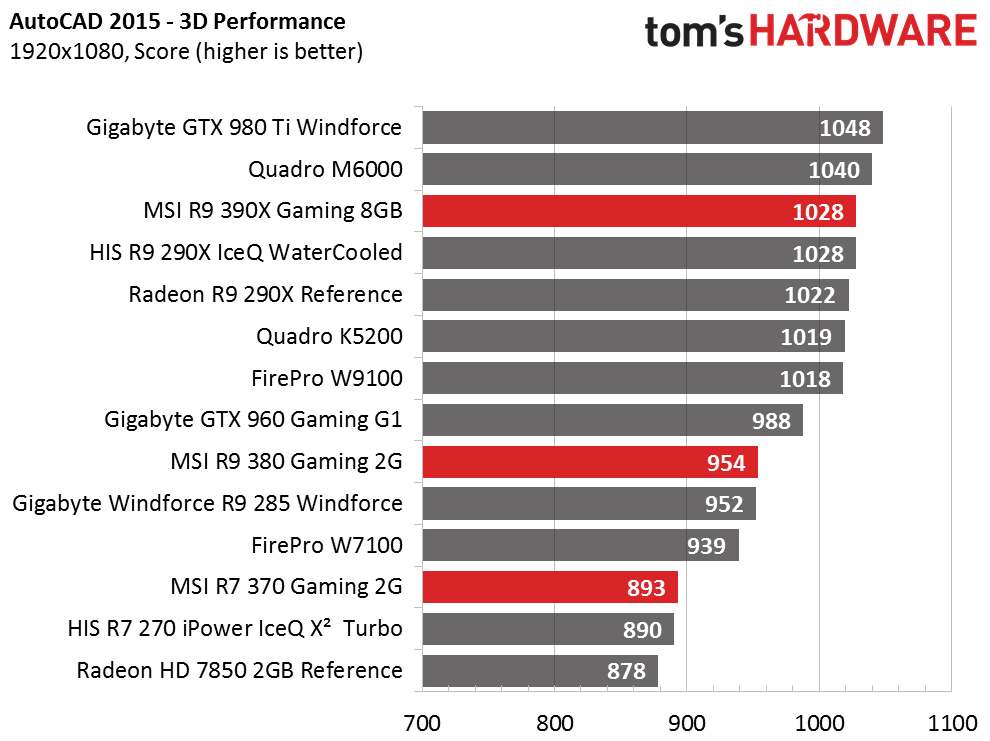
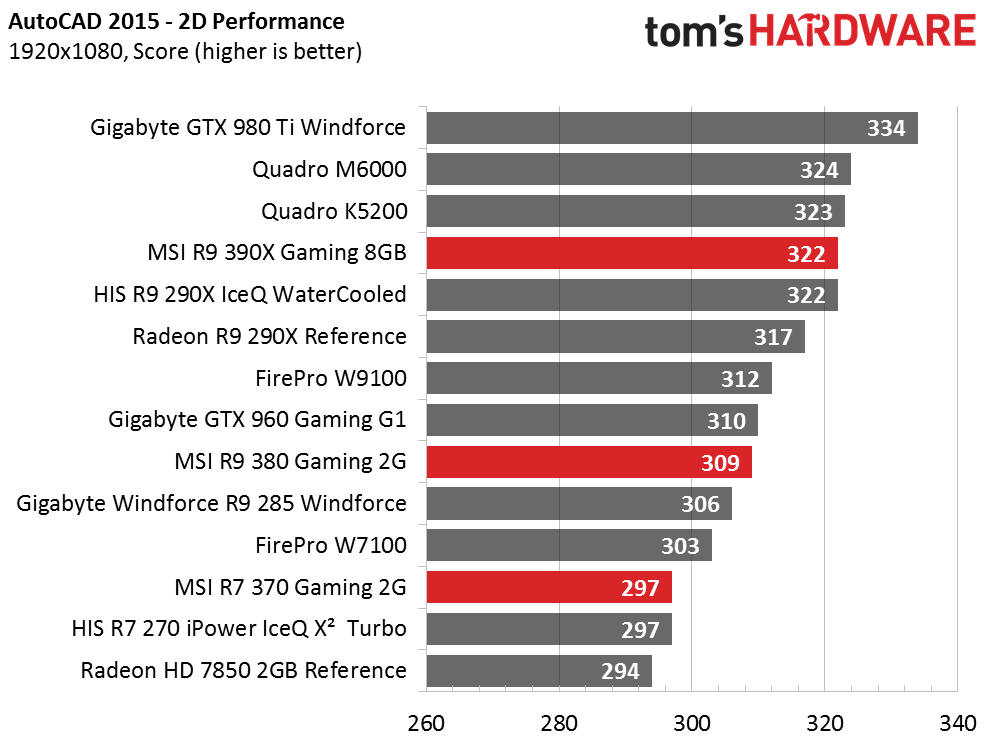
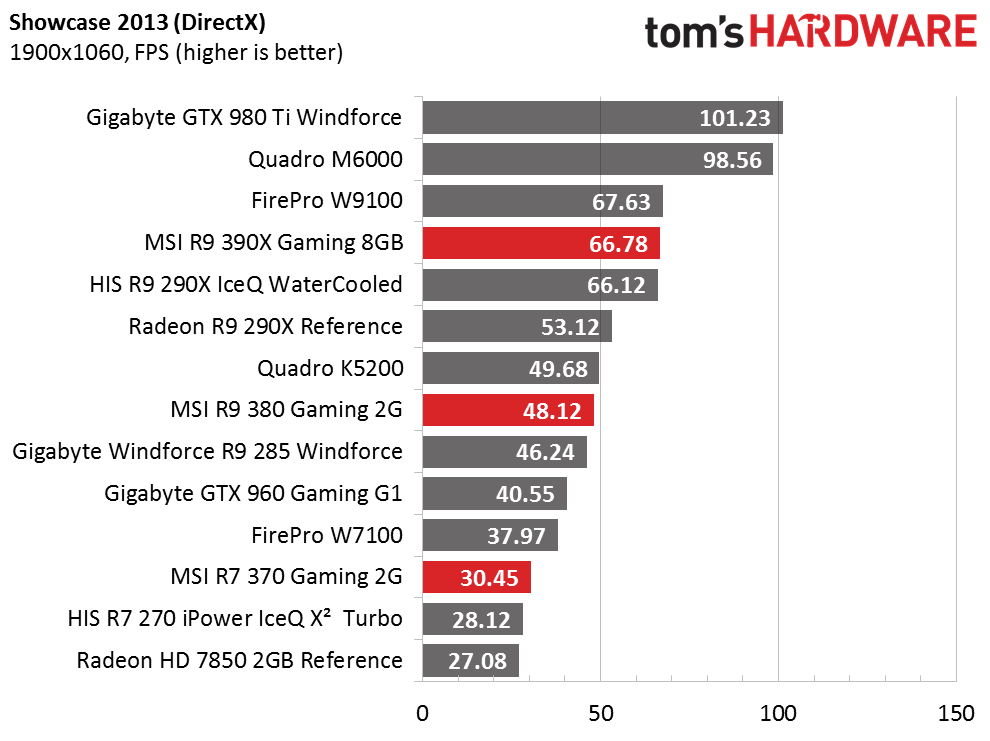
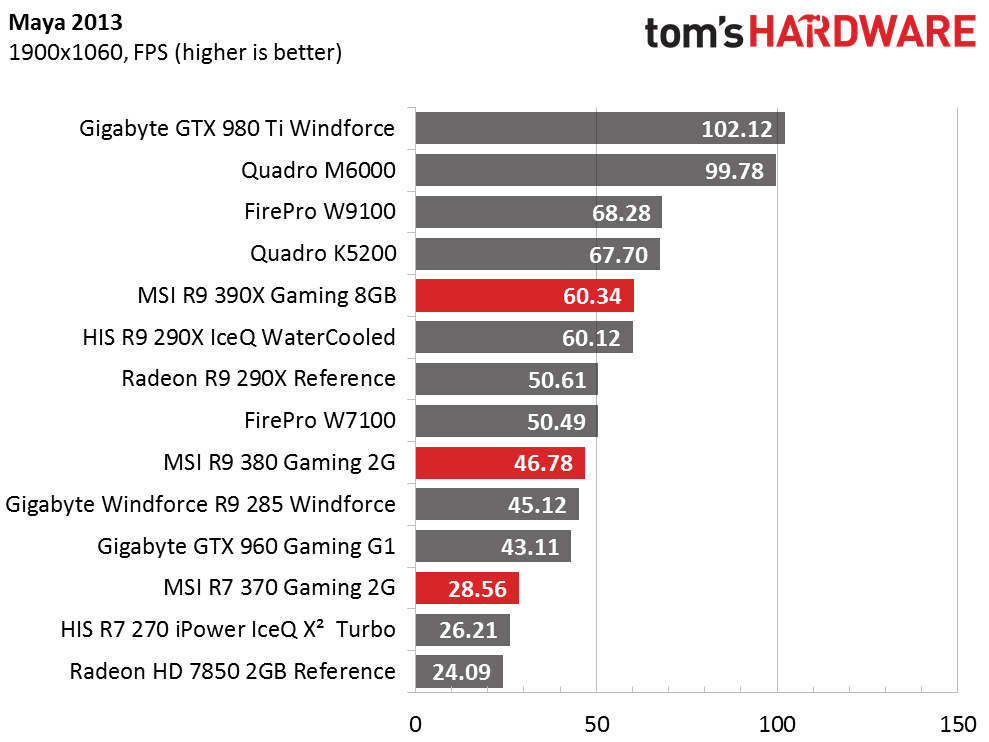
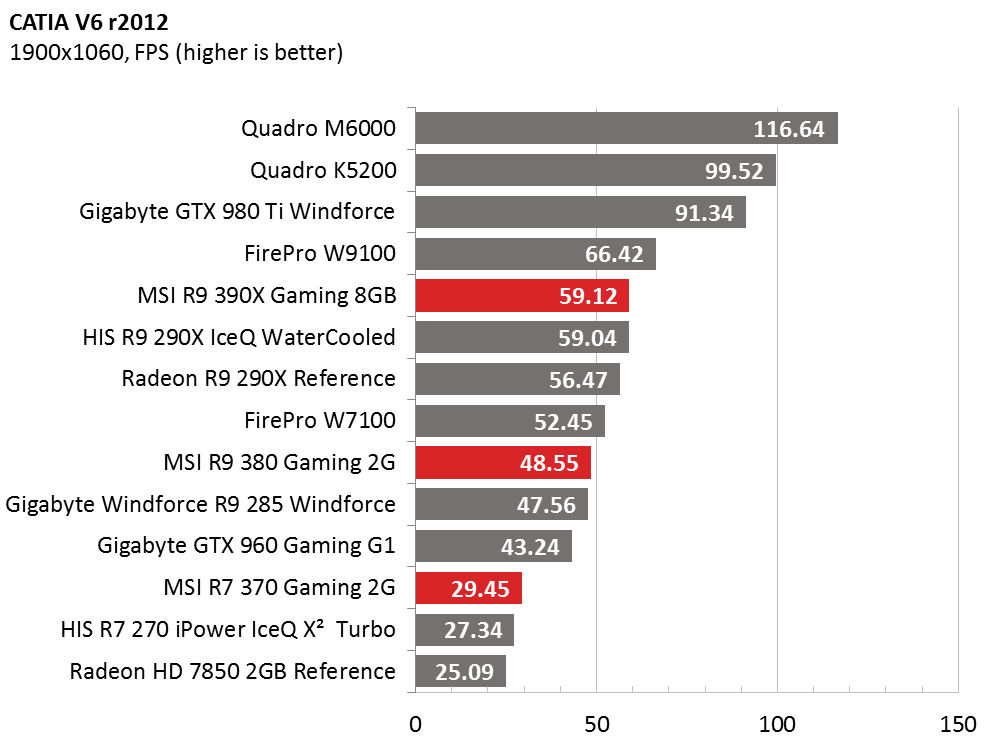
Depending on the application, it can be fun to work with consumer graphics cards, which cost a lot less. Just remember that these aren’t professional cards that can be used universally in the workstation world.
Get Tom's Hardware's best news and in-depth reviews, straight to your inbox.
Current page: Workstation And Professional Applications
Prev Page Gaming Results Next Page Idle Power Consumption
Igor Wallossek wrote a wide variety of hardware articles for Tom's Hardware, with a strong focus on technical analysis and in-depth reviews. His contributions have spanned a broad spectrum of PC components, including GPUs, CPUs, workstations, and PC builds. His insightful articles provide readers with detailed knowledge to make informed decisions in the ever-evolving tech landscape
-
Grognak 390X at 4K is the only one showing anything that could be called an improvement and that's entirely due to the additional RAM, which you can already get on a 290X. I fear for the future.Reply -
envy14tpe Again I am left disappointed....AMD please stop doing this to me. So what I learned is the 390X is the same as the 290X at 1440p or below (which is 95% or more of gamers) and the 390X only excels at 4k but still only on par with the 980 (non ti). Looks like I'm abandoning AMD for my next GPU. damn it.Reply -
FormatC ReplyWhy did you ignore 390?
I can only test what I have. Too less samples :(
The 390X is'nt a bad card per se - it depends a lot at the price and your personal preferences. -
fudoka711 Wait, I think I'm misunderstanding something. Is the 390x a rebranding of the 290x, but costing $100 more??Reply -
HideOut ReplyNice to see 980 Ti still stomps everything, glad I bought one... a wise investment!
These are rebadge cards, their new cards are due out in days. Fanboy -
de5_Roy MSI R9 390X Gaming 8G's texture fillrate in the spec table (1st page) may have been incorrect. the gpu-z screeny shows 193.6 GTexels/sec.Reply